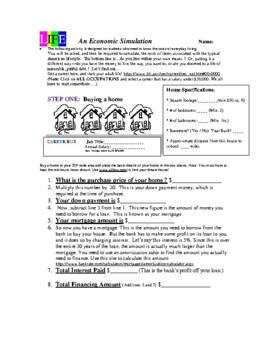LIFE: An Economics Simulation
- PDF
Description
Teaching business skills, life skills, and the basic economic principle of earning more than you spend is both easy and fun with LIFE: An Economics Simulation. This comprehensive economics activity has it all. Students must...
1.) get a career and start a budget.
2.) find an affordable house and then buy it.
3.) furnish the home and determine what the utilities bill will be on a monthly basis.
4.) buy food, clothing, other life necessities.
5.) start a family.
6.) fill out tax forms that look very similar to the standard 1040 EZ.
7.) assess their life at various stages of the simulation with several "Financial Check-Ups."
8.) Receive a final score with just how savvy they are with money on a budget.
LIFE: An Economic Simulation has some similarities to the classic game of Life, but it contains so much more detail. At the end of the simulation, students in my classes invariably say essentially the same thing:
"I never knew just how expensive it is to really just live!"
"You really have to pay attention to your money or it's just gone!"
And when I hear this statement, I smile, and think to myself: "Now you are starting to see the world as it truly is."





